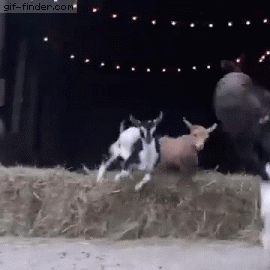
It may be tedious, but learning your radicals (偏旁 piān páng) is one of the best "hacks" available to students of Chinese to eventually master the language. As well as having a semantic connection with the character, indicating what a character may mean or relate to, they also provide the closest approximation to an "alphabet" in Chinese, allowing students to look up characters in dictionaries as arranged by radical and number of strokes.
No matter your mandarin level, memorizing radicals helps you to better understand character definitions as well as how to write and recall them, thus easing the overall learning process.
Below we've listed 25 of the most commonly occurring radicals (of the 214 in use) to help you get your radical learning off the ground and hopefully provide a little help next time you come across a word you're unfamiliar with.
If you want to dig deeper into characters and their composite characters, zhongwen.com can provide an enlightening and somewhat addictive way to break down each word and scour their meanings by radical or other elements.
亻- 单人旁 dān rén páng
Semantic indication: man, person
Examples: 你 nǐ you, 做 zuò do
刂 - 立刀旁 lì dāo páng
Semantic indication: knife
Examples: 刮 guā scratch, shave; 别 bié depart
忄- 竖心旁 shù xīn páng
Semantic indication: heart
Examples: 情 qíng emotions
扌- 提手旁 tí shǒu páng
Semantic indication: hand
Examples: 打 dǎ punch, 拉 lā pull, 推 tuī push
讠- 言字旁 yán zì páng
Semantic indication: talk
Examples: 说 shuō talk, 话 huà words
彳- 双人旁 shuāngrén páng
Semantic indication: walking, road
Examples: 行 xíng walk, 往 wǎng towards
犭- 反犬旁 fǎn quǎn páng
Semantic indication: animals
Examples: 狗 gǒu dog, 狼 láng wolf, 猫 māo cat
氵- 三点水旁 sān diǎn shuǐ páng
Semantic indication: water
Examples: 海 hǎi sea, 河 hé river, 洗 xǐ wash
口 - 口字旁 kǒu zì páng
Semantic indication: mouth
Examples: 吹 chuī blow, 吃 chī eat
阝- 耳朵旁 ěrduǒ páng
Semantic indication: hill, rising and falling
Examples: 陷阱 xiànjǐng trap
纟- 绞丝旁 jiǎo sī páng
Semantic indication: silk, weaving
Examples: 绳 shéng rope, 线 xiàn thread
辶 or 走 - 走之旁 zǒu zhī páng
Semantic indication: walk
Examples: 道 dào road, 近 jìn close to; or 赶 gǎn hurry, 起 qǐ stand up
木 - 木字旁 mù zì páng
Semantic indication: wood
Examples: 树 shù tree, 枝 zhī branch
女 - 女字旁 nǚ zì páng
Semantic indication: feminine
Examples: 妈 mā mother, 她 tā she
⻊- 足字旁 zú zì páng
Semantic indication: foot
Examples: 踢 tī kick, 跑 pǎo run
钅- 金字旁 jīnzì páng
Semantic indication: metal
Examples: 铁 tiě iron, 铝 lǚ aluminum, 银 yín silver
饣- 食字旁 shí zì páng
Semantic indication: eat; food
Example: 饭 fàn rice, 饺子 jiǎozi dumplings
衤- 衣字旁 yī zì páng
Semantic indication: clothing
Examples: 被 bèi quilt, 裙 qún skirt
目 - 目 字旁 mù zì páng
Semantic indication: eye
Examples: 瞎 xiā blind, 眼睛 yǎnjīng eyes
日 - 日字旁 rì zì páng
Semantic indication: sun, day
Examples: 明 míng bright, 时 shí time
贝 - 贝字旁 bèi zì páng
Semantic meaning: shell (money, as shells were once used as currency)
Example: 财 cái fortune, 货 huò goods
幺 - 幺字旁 yāo zì páng
Semantic indication: tiny, small
Examples: 幻 huàn fantasy, 幼 yòu young
土 - 提土旁 tí tǔ páng
Semantic indication: earth
Examples: 地 dì earth, 埃 āi dust
虫 - 虫字旁 chóng zì páng
Semantic meaning: bug, insect
Examples: 蜜蜂 mìfēng bee, 蚂蚁 mǎyǐ ant

READ: Aiya! How to Master China's Most Expressive Phrase
Photo: Thought Co
